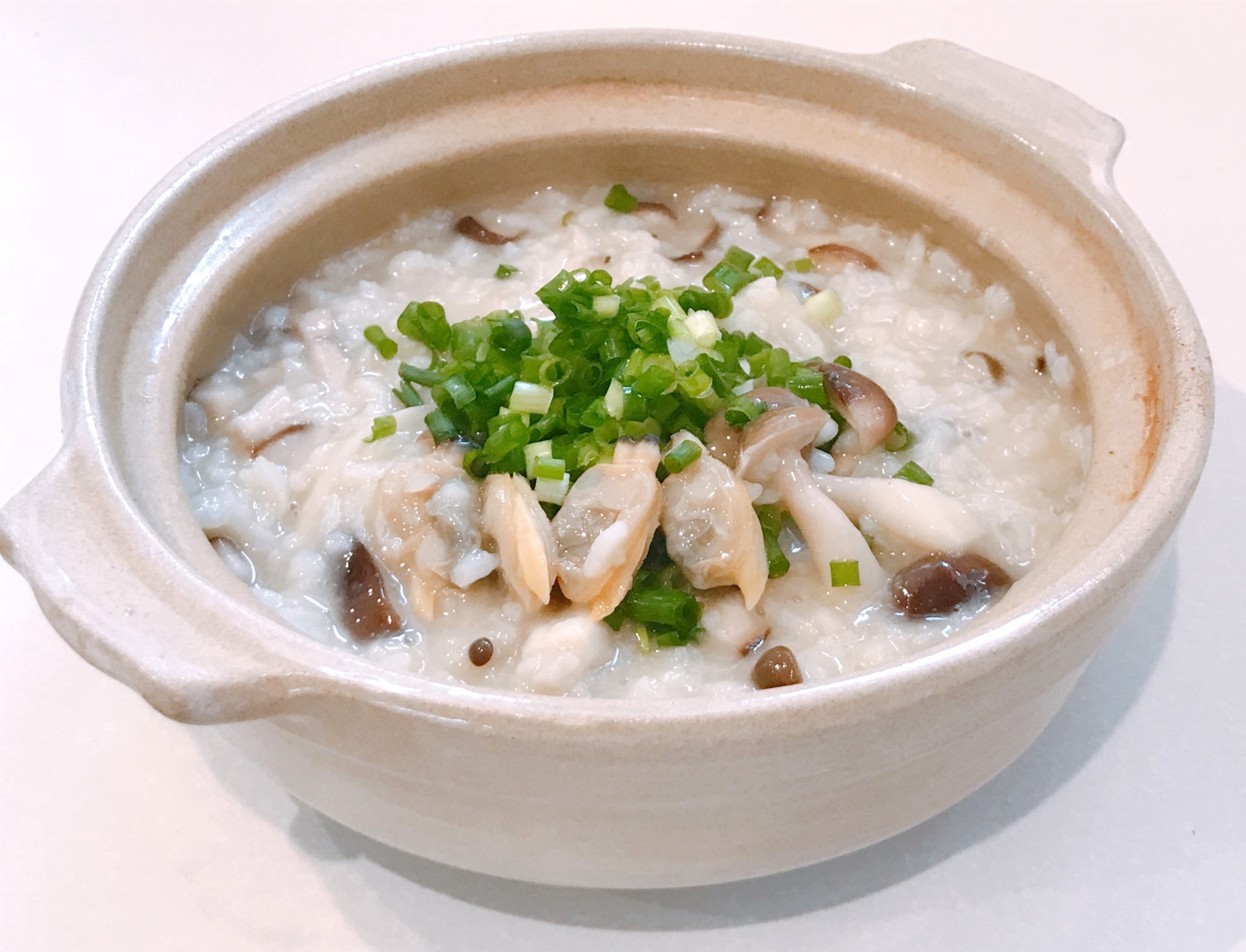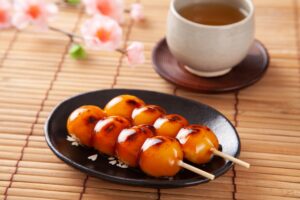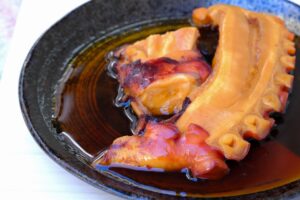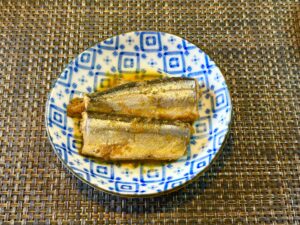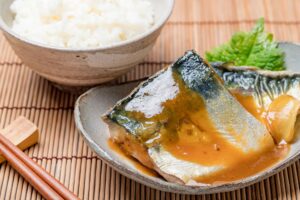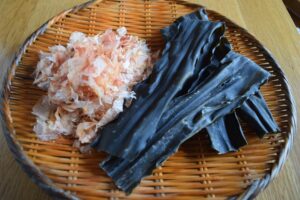Zosui (雑炊) is a traditional Japanese rice soup that blends cooked rice with broth, vegetables, and sometimes proteins like egg or chicken. Often served during cold seasons or when someone is feeling under the weather, this humble yet satisfying dish holds a special place in Japanese homes. In this guide, we’ll explore what zosui is, how it compares to other similar dishes, its cultural significance, and how you can easily recreate it at home—even outside Japan.
What Is Zosui?
Zosui (雑炊), pronounced “zo-soo-ee,” is a traditional Japanese rice soup that combines cooked rice with a savory broth, typically made from dashi or chicken stock. It is often enriched with vegetables, egg, and sometimes proteins like chicken or seafood. The texture is lighter than porridge, with visible rice grains floating in the broth rather than being broken down.
Unlike okayu (rice porridge), which starts with uncooked rice simmered until it becomes a thick gruel, zosui uses leftover cooked rice, making it a popular choice for transforming leftovers into something warm and nourishing. It is a common home remedy during illness or cold weather because of its gentle flavor, ease of digestion, and hydrating nature.
Zosui holds a strong place in Japanese food culture as a comfort food, much like chicken soup in the West. Whether enjoyed after a nabe hotpot meal or served to someone recovering from a cold, it embodies the principles of simplicity, seasonality, and healing that are central to Japanese cuisine.
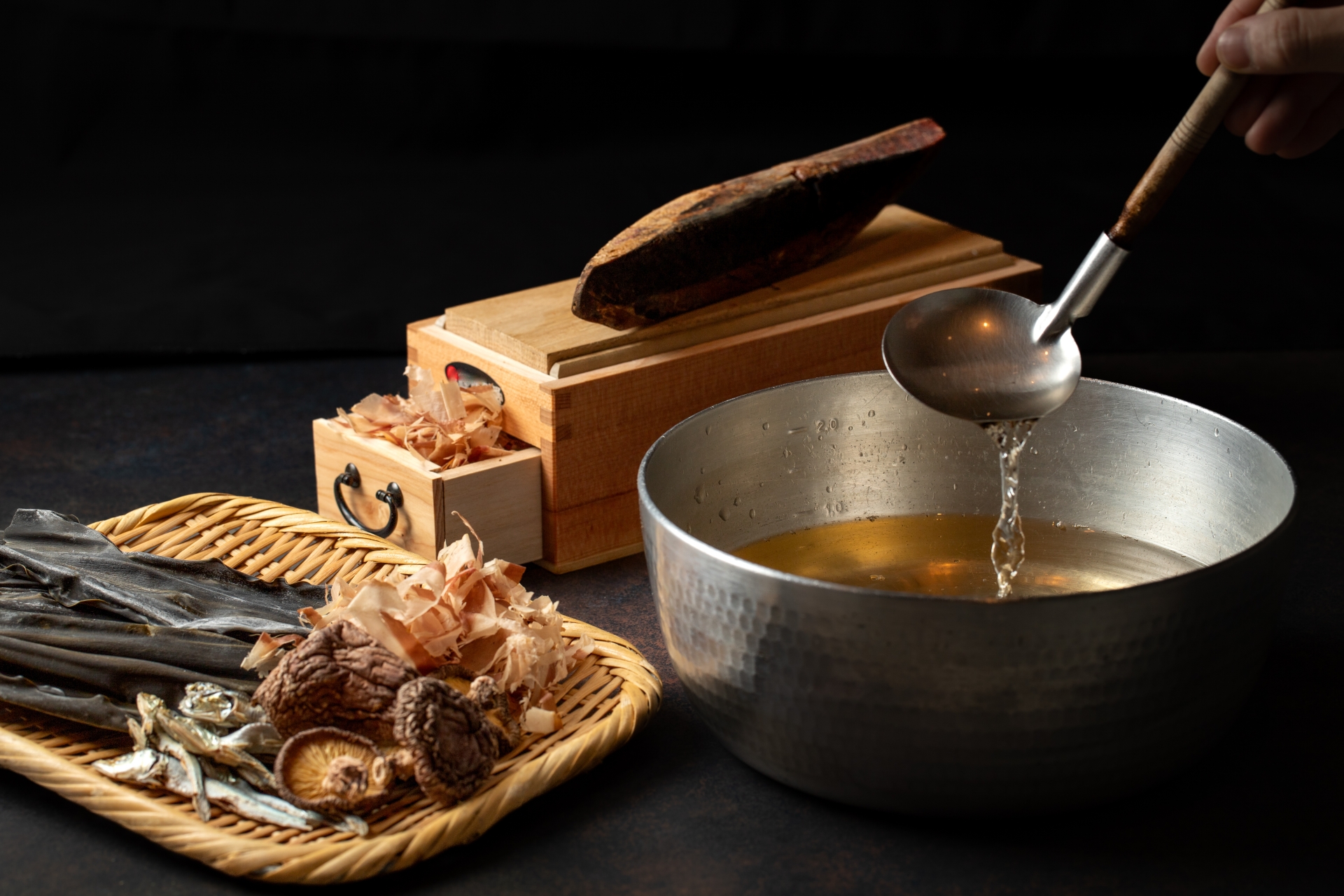
Zosui vs. Other Japanese Rice Dishes
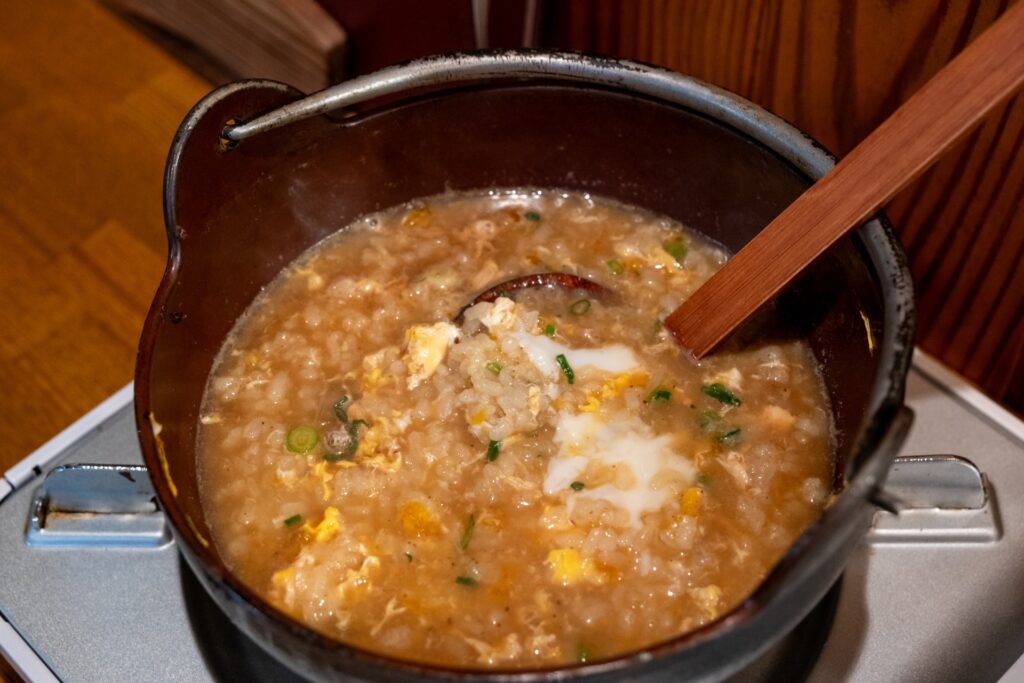
Zosui is often confused with similar Japanese rice dishes such as okayu and ojiya. Each of these dishes features rice and water or broth, but they differ significantly in preparation, texture, and cultural use.
| Dish | Rice Base | Texture | Preparation Method | Common Uses |
| Zosui | Cooked rice | Soup-like | Simmered in broth briefly | Comfort food, post-nabe, sick meals |
| Okayu | Uncooked rice | Porridge-like | Slowly simmered in water | Baby food, sick meals |
| Ojiya | Cooked rice | Slightly thicker than zosui | Simmered in broth | Regional home food, post-nabe |
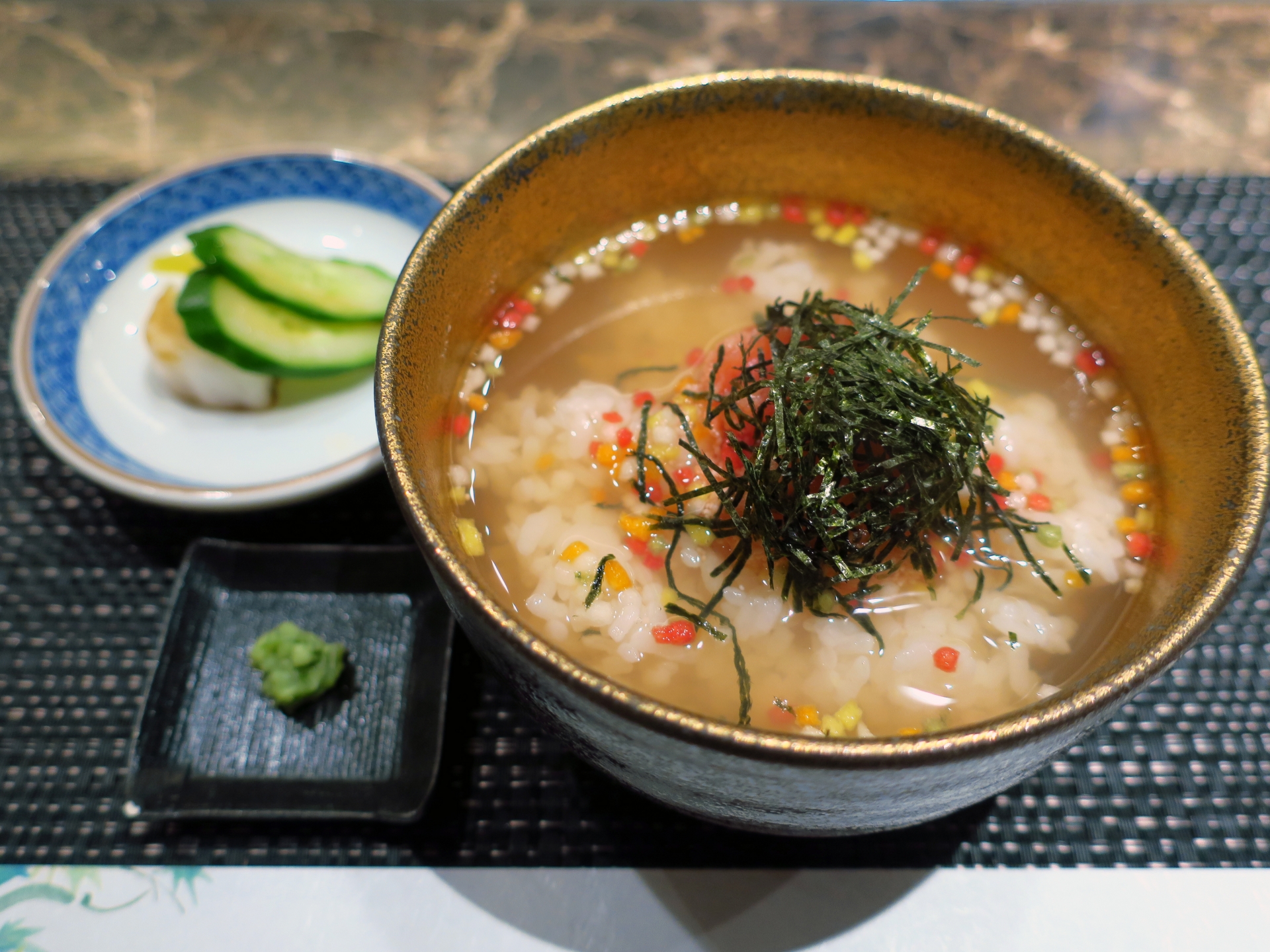
Zosui vs. Okayu
While both zosui and okayu are seen as gentle meals ideal for someone who’s feeling under the weather, their preparation and texture are quite different. Okayu is made by simmering raw rice in water over a long period, which results in a thick, soft, and porridge-like consistency. It’s commonly served to babies, the elderly, or those with digestive issues.
In contrast, zosui starts with already-cooked rice, simmered briefly in a flavorful broth alongside vegetables, egg, or protein. The final dish is lighter and more soup-like, with individual grains of rice maintaining their shape. Zosui feels more like a savory soup, whereas okayu is a spoon-thick gruel.
Zosui vs. Ojiya
The distinction between zosui and ojiya is subtle and often depends on regional or family traditions. Both use cooked rice and broth, but zosui tends to have more of a clear, soup-like consistency, while ojiya may be simmered longer until the rice begins to break down slightly, giving it a thicker, more rustic feel.
In many households, the terms are used interchangeably, especially after nabe (hotpot) meals, where leftover broth is used to cook rice for a warming final course. Some food experts note that zosui might be perceived as having a more refined or lighter presentation, while ojiya is considered heartier and more homestyle. However, these impressions vary greatly depending on region and personal experience—neither dish is inherently more elegant or superior. Ultimately, the difference often comes down to texture and family tradition: zosui typically leaves rice grains more intact, while ojiya leans toward a softer, more integrated consistency.
Health Benefits and Cultural Significance of Zosui
Zosui is celebrated not only for its flavor but also for its health benefits. As a light, hydrating meal, it is easy to digest and gentle on the stomach—ideal for people recovering from illness. The addition of ginger, green onions, or egg can provide nutrients and warmth, which is why zosui is often seen as a “healing food.”
In traditional Japanese households, zosui is commonly prepared during the winter or as a post-party meal to soothe the stomach after indulgent eating. It’s also part of the “shime” (closing dish) after hotpot, symbolizing warmth, closure, and nourishment.
Zosui aligns with Japan’s culinary values of minimal waste, as it makes excellent use of leftover rice and broth. Its role as a comfort dish reflects a deeper cultural appreciation for food that feeds both body and soul.
How to Make Zosui at Home (Even Outside Japan)
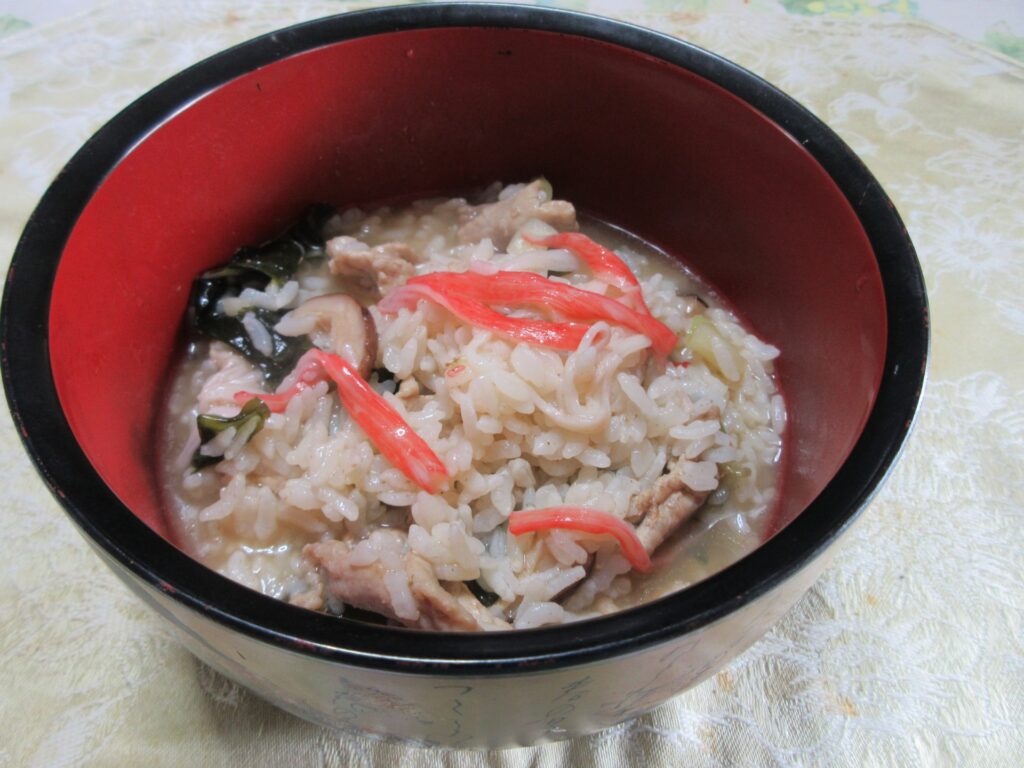
Making zosui at home is incredibly simple, and it doesn’t require access to specialty Japanese markets. Here’s a basic recipe to get started:
Basic Zosui Recipe
Ingredients:
- 1 cup cooked white rice (preferably short-grain or leftover)
- 2 cups dashi, chicken broth, or vegetable broth
- 1 egg (beaten)
- ½ cup chopped green onions
- ½ cup chopped vegetables (carrot, spinach, or mushrooms)
- Soy sauce or salt to taste
Instructions:
- Bring the broth to a simmer in a small pot.
- Add vegetables and cook until tender.
- Stir in the cooked rice and simmer for 2-3 minutes.
- Slowly pour in the beaten egg while stirring gently.
- Season with soy sauce or salt.
- Top with green onions and serve warm.
Ingredient Substitutions for Western Cooks
- Rice: If Japanese short-grain rice is unavailable, use arborio or any sticky white rice. Avoid long-grain varieties like basmati.
- Dashi: Substitute with chicken broth, vegetable broth, or even a mix of water with a dash of soy sauce and sesame oil.
- Soy sauce: Use tamari for gluten-free diets or coconut aminos for a soy-free option.
- Vegetables: Local produce like kale, zucchini, or sweet corn can be used based on seasonality.
Vegan or Gluten-Free Zosui Options
To make zosui suitable for specific diets:
Vegan Zosui Recipe:
- Use vegetable broth instead of dashi.
- Omit the egg or replace it with silken tofu cubes.
- Use tamari instead of soy sauce.
- Add mushrooms, seaweed, and seasonal greens for umami.
This makes for a wholesome, plant-based alternative that doesn’t compromise on flavor.
Regional and Seasonal Variations of Zosui
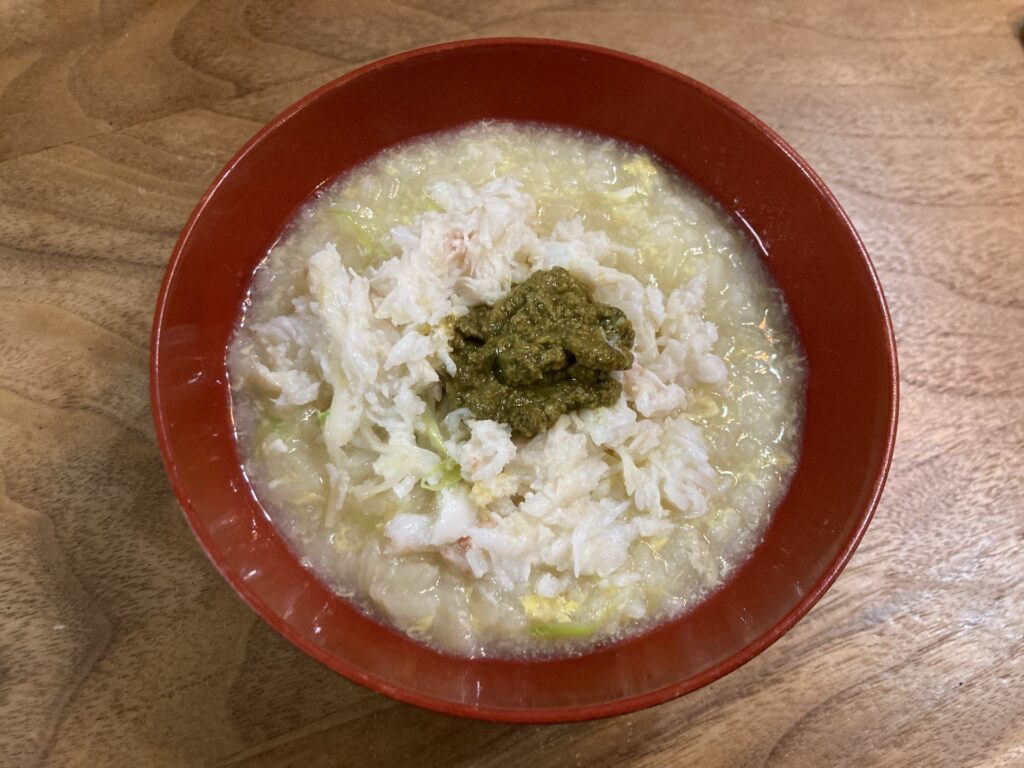
Across Japan, zosui takes on regional flavors and ingredients, offering a glimpse into local tastes and seasonal traditions:
- Hokkaido: Crab zosui (kani zosui) featuring sweet snow crab and miso-based broth.
- Nagoya: Red miso zosui, giving the dish a robust and earthy flavor.
- Kyoto: Yuba (tofu skin) and light dashi for an elegant twist.
- Okinawa: Tropical vegetables and pork-based broths add a southern flair.
Seasonal ingredients also influence zosui recipes. In autumn, mushrooms like shiitake and maitake are popular. In spring, bamboo shoots and greens make a refreshing version.




Zosui Around the World: Comparisons and Cultural Insights
Zosui may be distinctly Japanese, but its concept resonates globally. It shares characteristics with:
- Chinese Congee: Though thicker and made from raw rice, congee serves similar purposes as a comfort food.
- Western Chicken Soup: A go-to for colds and flu, similar to zosui’s role in Japan.
- Italian Risotto (reheated): Leftover risotto can resemble zosui when thinned with broth.
These parallels highlight universal values: reducing food waste, maximizing nourishment, and finding warmth in simplicity. Zosui represents a culinary philosophy that honors care, sustainability, and tradition.
Conclusion: Why Zosui Deserves a Spot in Your Kitchen
Zosui is more than just a rice soup—it’s a reflection of Japanese wisdom in the kitchen. By transforming leftover rice into a healing, warm bowl of comfort, it turns minimal ingredients into something deeply satisfying. Whether you’re recovering from a cold, trying Japanese recipes for the first time, or simply looking for a cozy meal on a chilly evening, zosui is an accessible and nourishing choice.
With easy substitutions and countless variations, you can make zosui your own. It’s a dish that invites creativity and offers comfort, wherever you are in the world. So go ahead—try making zosui tonight and discover why it’s been a staple in Japanese homes for generations.

